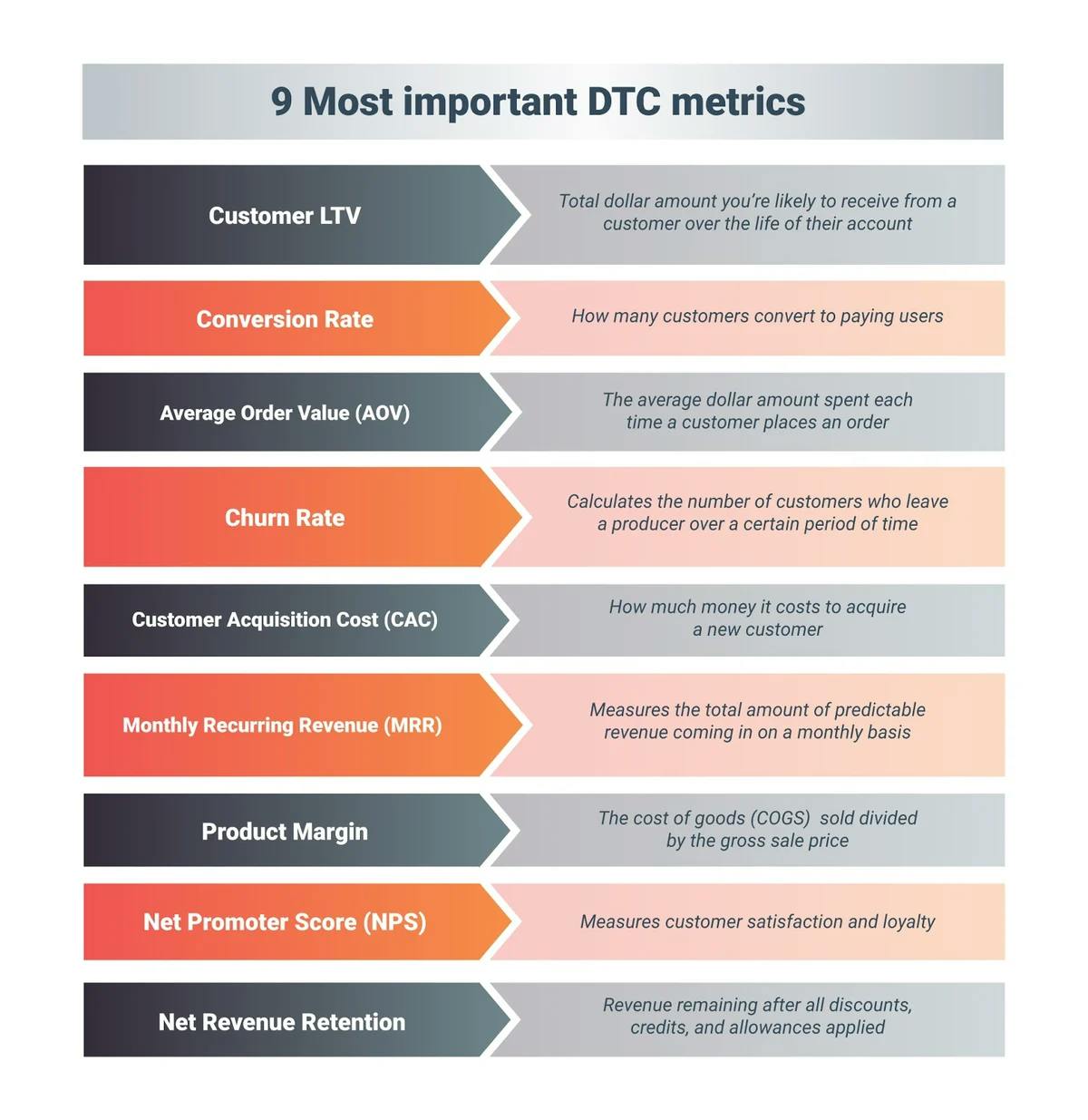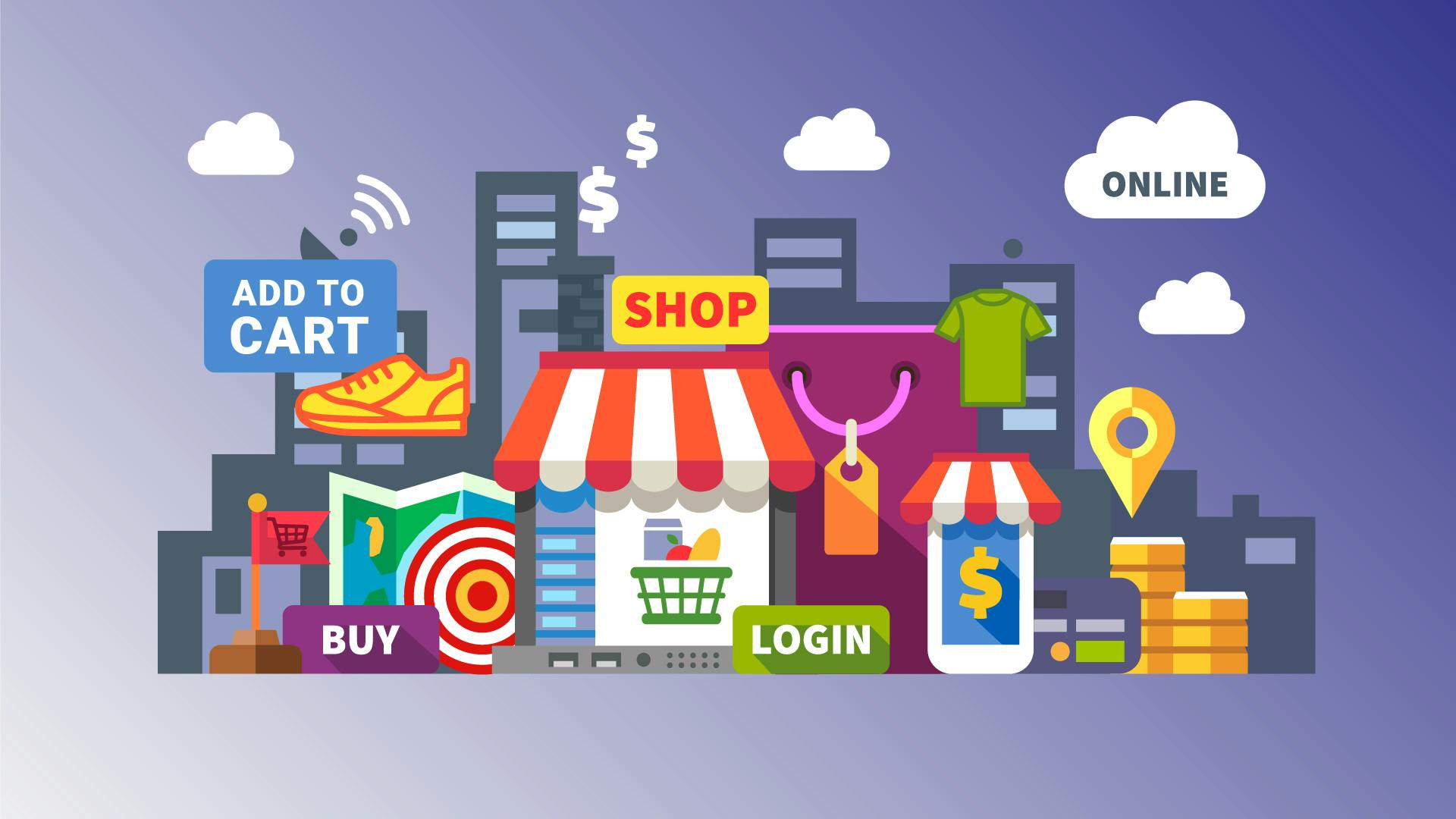What is direct-to-consumer retail?
Direct to consumer retail eliminates the middleman from the buying process. DTC companies manufacture and ship their products directly to buyers without relying on traditional stores. They maintain end-to-end control over developing, marketing, and distributing products—allowing them to sell their products at lower costs than traditional retailers.
Here are some popular DTC brands that may ring a bell:
- Casper: Online mattress company founded in 2014.
undefinedundefinedundefinedundefined
As the COVID-19 pandemic and quarantine forces brands to get creative with how they distribute products, many have turned to the DTC model. Now that some of the latest direct-to-consumer statistics indicate that DTC is gaining traction, competition is heating up. And when competition is fierce, making small errors can be detrimental.
Companies must stay on top of the market and hone in on their own growth. I’ve compiled a list of certain DTC metrics that should be on your radar at all times.
As the COVID-19 pandemic and quarantine forces brands to get creative with how they distribute products, many have turned to the DTC model. Now that DTC is gaining traction, competition is heating up. And when competition is fierce, making small errors can be detrimental.
9 key DTC metrics & KPIs
Many of these metrics are intersectional with B2B and SaaS because they reveal important data all businesses need to know. Tracking DTC metrics will help you build momentum and unlock growth.
Here are the top DTC metrics we covered today:
- Customer LTV
- Conversion Rate
- Average Order Value
- Churn Rate
- Customer Acquisition Cost
- Monthly Recurring Revenue
- Product Margin
- Net Promoter Score
- Net Revenue Retention

Customer LTV
Customer lifetime value is the total dollar amount you’re likely to receive from an individual customer over the life of their account with your product. Lifetime value determines how long a customer will stay with your company and how much revenue may be generated during that time.
Tracking customer LTV is crucial because it dictates how much money you can spend acquiring customers, also known as customer acquisition costs (which I’ll explain in a bit).
Tracking LTV is especially important for DTC companies that follow a subscription model, meaning customers pay them a recurring price to receive products on a scheduled basis. If you notice customers are canceling after a certain period of time—something is wrong. Either you need to adjust the pricing, product offering, features, or all of the above.
Conversion Rate
Conversion rate calculates how many customers convert to paying users. The conversion rate includes customers who visit your site and make a purchase before leaving. You can also apply conversion rate to trials—when a customer converts to a paid user once the free trial is up.
You spend a certain amount of money on your website to attract potential customers. Tracking your conversion rate will reveal if the marketing dollars spent are resulting in a positive ROI. If you’re noticing a low conversion rate—it’s time to figure out why and how to optimize.
Average Order Value (AOV)
AOV tracks the average dollar amount spent each time a customer places an order.
AOV = Total revenue/number of orders
Focusing attention on increasing AOV can directly impact your margins. One quick hack to improve your AOV—adding a free-shipping threshold that’s slightly above your AOV.
Churn Rate
Churn rate calculates the number of customers who leave a product over a certain period of time. Churn rate is extremely important to understand for companies that follow the subscription model, as it reveals the health and momentum of your subscription plan.
Customers who cancel directly impact other DTC metrics like customer acquisition cost (CAC), monthly recurring revenue (MRR), and customer lifetime value (LTV). If your churn rate is high then you need to determine why and how you can retain customers.
Customer Acquisition Cost (CAC)
Customer acquisition cost is how much money it costs to acquire a new customer. CAC is not just an important metric for the growth team. It encompasses the efforts of many teams, like marketing, creative, growth, customer experience, and engineering, working together.
CAC is important to look at relative to customer LTV. You want your LTV:CAC ratio to be about 3:1, meaning customers spend more than it cost to acquire them.
Monthly Recurring Revenue (MRR)
Measures the total amount of predictable revenue coming in on a monthly basis. If you’re offering a DTC subscription and NOT calculating MRR, then chances are you’re miscalculating growth.
MRR is huge in measuring your company’s growth and momentum. It’ll help you understand the health of your business model, set goals, and determine how you’ll reach those goals.
Product Margin
The cost of goods sold (COGS) divided by the gross sale price is your product margin. Product margin doesn’t take into account things like shipping, handling, and discounts. It’s strictly how much you can make relative to what you spent on the product and how much customers purchase the product.
Net Promoter Score (NPS)
Net promoter score (NPS) is a metric used to measure and index customer loyalty. Calculating customers’ net promoter scores is a good way to quantify their strength as brand promoters.
Brand promotion is a growing marketing tactic in the DTC space. Many companies will collaborate with influencers to sway your target audience. They’ll use their social media channels to promote your products, since most of their followers likely trust their recommendations.
Not all brand promoters are hired influencers, sometimes it happens naturally where people will recommend your products to friends. I’ve certainly done it. Calculating net promoter scores and gauging customer satisfaction will reveal what marketing and advertising efforts are happening post-purchase.
Net Revenue Retention
There are various ways to look at retention—but at its core, retention measures the continued use of a product or service.
With the subscription model, retention is especially important. It’s not as relevant for one-time purchases unless you’re tracking the return rate of those customers, i.e., how frequently they purchase from you.
4 retention strategies to improve DTC metrics
Now that you know the DTC metrics you need to track—how do you improve them? Let’s go through four strong retention strategies.
Be proactive, not reactive
If you leave retention as an afterthought, your business will most likely fail. Retention needs to constantly be a proactive effort. Even before a customer commits to your brand, ask how you can retain this person for the long-term.
Reach out with personalized emails regularly, rather than waiting for their payment to fail. Constantly optimize how you can communicate with customers to ensure they are happy.
Map out multiple customer journeys
Put yourself in the mind of a customer. Depending on the end goal of each customer, the journey will look a bit different. It’s important to understand all the different types of journeys customers have so you can continuously work to improve them. Then, as you’re going through this journey, discover where customers tend to churn and why.
Creating buyer personas is a good way to map out the customer journey. Buyer personas are fictionalized representations of your ideal customers. They are typically generalized to describe the “types” of customers that find value in your product, but are based on market research on your current customers.
Buyer personas will help you better understand the motives behind your customers and the different types of customers associated with your brand.
Get direct customer feedback whenever possible
Feedback is crucial for retention. Gather feedback from existing customers and customers who churn. Even if the churn is beyond repair—you can learn from the departure by asking what went wrong.
In addition to tracking relevant DTC metrics, be sure to gather feedback from existing customers on a consistent basis so you can be sure to continuously improve their experience.
Create a customer loyalty program
Adopting a loyalty program is a no-brainer retention strategy for DTC companies. Reward your most loyal customers with something—a discount, feature, etc. It’s a simple way to express gratitude and entice them to come back.
Boost DTC growth with retention experts
Retention is a powerful growth lever. Optimizing retention can unlock revenue you’ve previously left on the table. While many companies spend more time and effort acquiring new customers, it’s actually more beneficial (and less costly) to sell to existing users.
Automate your churn recovery
If you really want to make the most out of your retention strategy, it’s okay to call in some backup. Paddle Retain stops churn before it even happens—combining subscription expertise with algorithms that leverage millions of data points to win back customers. We’ll look at your email cadences and repayment process to ensure it’s as frictionless as possible. The best part: you only pay for performance. Get your ROI analysis and grow your business.
Takeaways
Direct to consumer takes the middleman out of the buying process, eliminating the need for traditional stores.
The DTC model gained traction during the COVID-19 outbreak when people were forced to shop almost online. The digital transformation was accelerated and now more and more companies are seeing the benefits of DTC. This means your company needs to remain competitive.
The best way to compete is to stay on top of your metrics.
Remember—retention is not an afterthought. Take proactive measures all the time to unlock as much growth and revenue as possible.
Direct-to-Consumer (DTC) Metrics FAQs
How do I start a DTC brand?
To start a DTC brand, you’ll need to identify a product, set up a website to raise awareness and sell the product, have a shipping and fulfillment process in place, build a digital marketing campaign, and ensure ongoing customer satisfaction to build customer loyalty.
How do I grow a DTC business?
Adopting a subscription model is key to DTC business growth. This allows you to establish a long-term relationship with your customers and generate recurring revenue. Having a pulse on your market is key to growing your DTC business, as well as tracking the right DTC metrics to increase customer retention over time.
What are the key DTC metrics that should be tracked for DTC growth?
The 9 key metrics listed in this article all contribute to understanding business health and performance. However, if your business is just starting out, the top metrics to track are: monthly recurring revenue (MRR), customer lifetime value (LTV), customer acquisition cost (CAC), and churn rate. These four metrics will help you track the cost efficiency of your business and identify areas of improvement.
How often should I be looking at my DTC metrics?
You should be tracking your DTC metrics as often as possible to make sure that you are on top of business performance relative to goals. The frequency depends on the complexity of your business and the size of your team. At minimum, a monthly report is recommended, though weekly tracking is even better to identify and respond to fluctuations in a timely manner.


